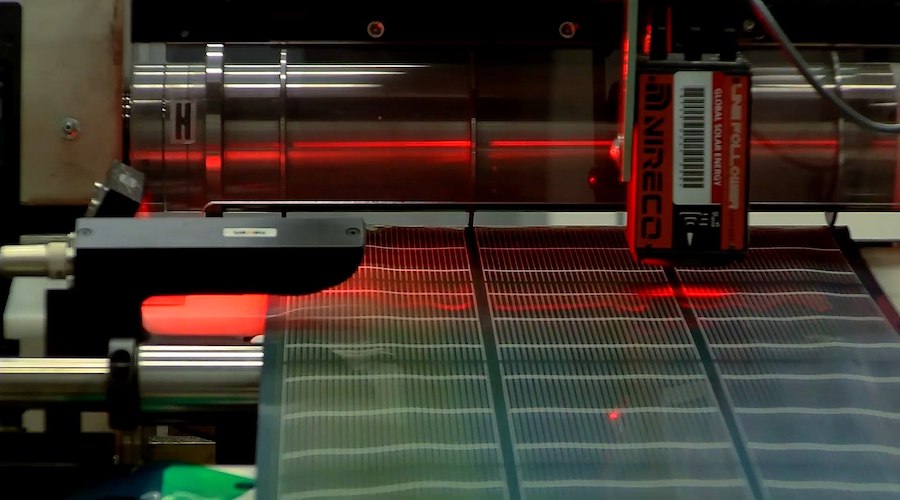“This new growth approach can significantly suppress the phase segregation,” said Kai Zhu, principal investigator on the project and lead author of the new paper. “Compositional texture engineering for highly stable wide-bandgap perovskite solar cells.”
The new approach addressed that problem and produced a wide-bandgap solar cell with an efficiency of greater than 20% and 1.33-volt photovoltage and little change in the efficiency over 1,100 hours of continuous operation at a high temperature.
The new method also allowed for an all-perovskite tandem cell to obtain an efficiency of 27.1% with a high photovoltage of 2.2 volts and good operational stability.
In the tandem cell, the narrow-bandgap layer is deposited on top of the wide-bandgap layer. The difference in bandgaps allows for more of the solar spectrum to be captured and converted into electricity.
Perovskite refers to a crystalline structure formed by the deposition of chemicals onto a substrate. A high concentration of bromine causes more rapid crystallization of the perovskite film and often leads to defects that reduce the performance of a solar cell. Various strategies have been tried to mitigate those issues, but the stability of wide-bandgap perovskite solar cells is still considered inadequate.
Turning things around
The newly developed approach builds upon previous work that flipped the typical perovskite cell. Using this inverted architectural structure allowed the researchers to increase both efficiency and stability and to easily integrate tandem solar cells.
The NREL-led group employed that same architecture and moved further away from the conventional method of making a perovskite.
The traditional method uses an antisolvent applied to the crystallizing chemicals to create a uniform perovskite film. The new approach relied on what is known as gas quenching, in which a flow of nitrogen was blown onto the chemicals. The result addressed the problem of the bromine and iodine separating, resulting in a perovskite film with improved structural and optoelectronic properties.
The antisolvent approach also allows the crystals to grow rapidly and uniformly within the perovskite film, crowding each other and leading to defects where the grain boundaries meet.
The gas-quenching process, when applied to high-bromine-content perovskite chemicals, forces the crystals to grow together, tightly packed from top to bottom, so they become like a single grain. The process also significantly reduces the number of defects. The top-down growth method forms a gradient structure, with more bromine near the top and less in the bulk of the cell. The gas-quench method was also statistically more reproducible than the antisolvent approach.
The researchers also tried argon and air as the drying gas with similar results, indicating that the gas-quench method is a general way for improving the performance of wide-bandgap perovskite solar cells.
The new growth approach demonstrated the potential of high-performance all-perovskite tandem devices and advanced the development of other perovskite-based tandem architectures such as those that incorporate silicon.




